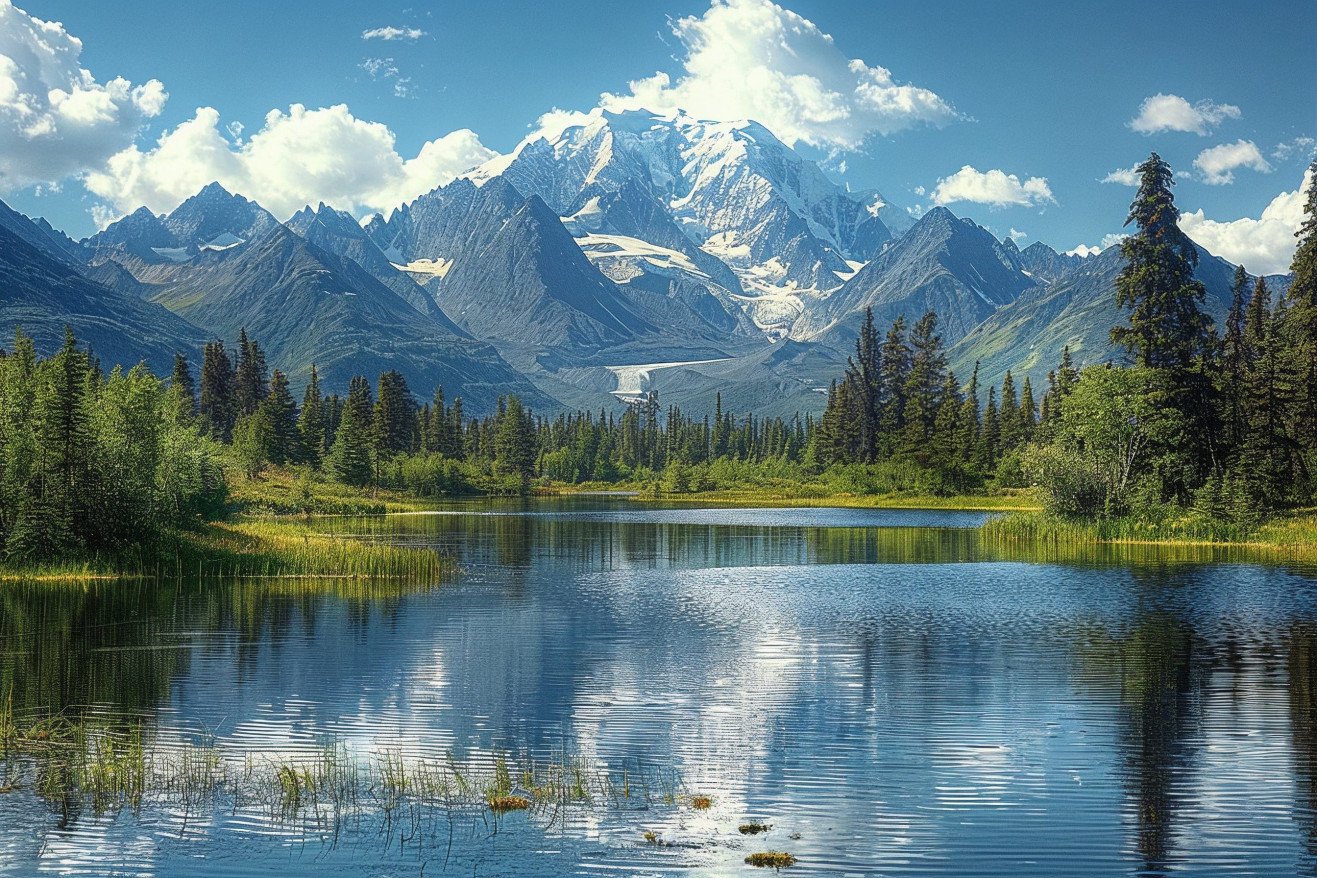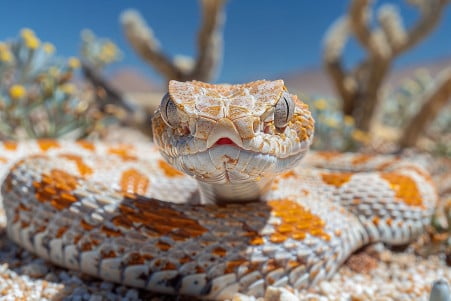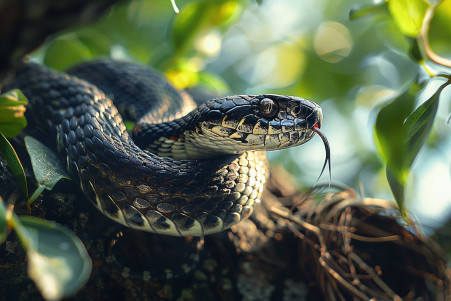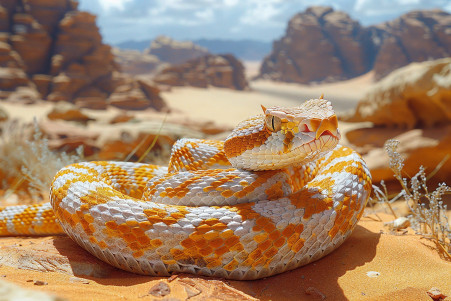Why Are There No Snakes in Alaska? The Snake Snub Mystery
19 March 2024 • Updated 18 March 2024

Despite the harsh climate of Alaska, one question remains: have snakes managed to find a way into the state? Alaska is home to no native snakes, and the cold temperatures and extreme winter conditions make it an unlikely place for them to survive. As a result, snake sightings in the state are rare and are often the result of pet releases or accidental transport rather than a wild snake population.
This investigation will look at ecological and zoological research that has investigated the reasons behind the presence of reptiles in Alaska. This will include a look at studies on climate limitations, the potential for snakes to adapt, and the laws that have been put in place to protect the state’s vulnerable ecosystems.
By the end of this investigation, you will have a thorough understanding of the natural and human factors that have led to the absence of snakes in the Alaskan wilderness.
Are there snakes in Alaska?
Cold Country: Why There Are No Snakes in Alaska
Snakes, as ectotherms, rely on the environment to regulate their body temperature, and the cold climate of Alaska is a significant ecological barrier to their survival. According to Froglife, which studies ectothermic adaptations to cold climates, some reptiles and amphibians can adapt to cooler temperatures, but most snake species are unable to survive the extreme cold and long periods of darkness in Alaska.
The glacial history and limited warming periods of Alaska’s past climate offer little support for the idea that snakes were ever native to the state.
In addition, as the Loudoun Wildlife Conservancy explains, some reptiles have adaptations like brumation or freeze tolerance that help them deal with cold temperatures.
However, the environment in Alaska is more extreme than the one reptiles have adapted to in lower latitudes. For example, the Common Garter Snake, which has impressive cold tolerance, can survive temperatures just below freezing by using taurine as a cryoprotectant.
However, it is not adapted to the harsher conditions of Alaska. This ecological mismatch is why snakes are not found in the wilds of Alaska, where the environment is still largely too extreme for these cold-blooded animals to conquer.
A Garter Snake in the Great North?
Although the cold climate of Alaska is not conducive to snakes, there have been reports of the Common Garter Snake (Thamnophis sirtalis) in the state.
According to KTNA, a professional birdwatcher once raised eyebrows by claiming to have seen a garter snake near the coast close to the Canadian border.
This led to a deeper dive into the claim, and it was found that there were articles that listed the garter snake as the only snake species that could possibly be found in Alaska. However, the Amphibians and Reptiles of Alaska field handbook by S. O. MacDonald, as cited by KTNA, calls these claims into question, noting that there is no verified evidence of their presence.
The Common Garter Snake is known for its adaptability and broad range, which allows it to survive in a variety of climates throughout North America.
The Alaska Herpetological Society notes that there have been credible reports of garter snakes being found along major river corridors like the Taku and Stikine, which could potentially be natural routes into Alaska. It’s thought that flooding events could occasionally push these snakes out to the coast, but no populations have been established.
In some cases, it’s believed that garter snakes found in Alaska may be escaped pets or hitchhikers in cargo. While these instances are interesting, they don’t mean that a native population of garter snakes has been established. The question of whether or not garter snakes are native to Alaska is still open, and it’s a reminder of the resilience of wildlife in even the most extreme environments.
Snakes in Alaskan Mythology: The Tizheruk and Indigenous Traditions
Snakes are a common theme in the intricate fabric of Alaskan folklore and indigenous traditions. According to Adopt-A-Pond News, snakes are often seen as spirit animals and protectors in First Nations culture, a stark contrast to the negative connotations they have in Western culture. The Medicine Serpent is especially important in Anishinabek culture, where it is a symbol of healing and protection.
The legend of the Tizheruk, as described by North American Cryptids, is one of the most well-known examples of Alaskan snake mythology. The Inuit people of the area have a deep fear of the Tizheruk, a sea serpent that is said to have supernatural powers and to be a bringer of bad luck. This is an example of how snakes are often taboo and have deep cultural significance in indigenous communities.
These myths and legends have led to a complicated relationship with snakes in Alaskan culture, one that is both positive and negative. While these beliefs are based in myth and tradition, they have had a lasting impact on how snakes are viewed and treated in Alaska and beyond. This cultural background adds depth to the ongoing conversation about Alaskan wildlife, especially in terms of the ecological impact of both real and mythical species.
The Ripple Effect of Invasive Snakes
The impact of snakes being introduced to non-native environments can be seen in the well-documented cases of Southern Florida and the Balearic Islands. A study in the Journal of Applied Ecology describes the impact of invasive Burmese pythons in Southern Florida. The snakes have become a major predator of native mammals, leading to trophic cascades that have altered the Everglades’ ecosystem.
Meanwhile, a study published in PLOS ONE explains that the accidental introduction of snakes to the Balearic Islands has led to concerns about the islands’ native biodiversity. The snakes have become a successful invasive species, threatening the islands’ endemic species and changing the ecological balance. These examples show the potential danger of non-native snake populations in Alaska if they were ever to become established.
While Alaska’s climate currently acts as a barrier to invasive species, the impact of climate change and human intervention could change that. It’s important to stay vigilant and work to prevent invasive species from becoming established in order to protect Alaska’s ecosystems. Other examples show how complex ecosystems can be and the damage that can be done by the introduction of a new predator.
Protecting Alaska’s Ecosystems: Legal Measures to Prevent Invasive Species
Strong laws and proactive regulations help protect Alaska from the threat of invasive species, including snakes. For example, the Alaska Noxious Weed Control Act is important for regulating activities that could lead to the unintentional introduction of invasive plants.
The state’s Invasive Species Management plans are far-reaching and include early detection and rapid response plans that enable the state to quickly address potential ecological dangers before they can become a problem, according to State Regs Today.
Alaska also maintains strict protections like the Ballast Water Management Program and the Non-Native Wildlife Control Initiative that help the state balance the need for economic development with the need to protect the environment and ensure that the state’s habitats are not damaged by commercial activities. In addition, public awareness programs and the Alaska Invasive Species Program help ensure that the public is involved in protecting the state’s natural resources.
Through a combination of laws and community-based programs, Alaska continues to be on the lookout for invasive species, protecting its ecosystems and the biodiversity they contain for years to come.
Unraveling the Serpentine Silence: Alaska’s Final Verdict
With the final act of the mysterious snake case in Alaska, the evidence is clear that the state is home to no native snakes. A combination of ecological factors, including a climate that is inhospitable to cold-blooded reptiles, and strict legislation has ensured that the state’s ecosystems remain free of serpentine inhabitants. Meanwhile, the state’s indigenous folklore and respect for snakes have added to the state’s cultural story without changing its biological reality.
These results highlight the important balance that exists within Alaska’s biomes. While the state’s wild landscapes have been the source of mythical serpents like the Tizheruk, the very real threat of invasive species upsetting this balance is a powerful reminder of our duty.
It’s important to protect the state’s unspoiled landscapes from potential ecological invaders, not just as a legal requirement but as a shared goal to respect the natural and cultural history that has shaped this beautiful state.


